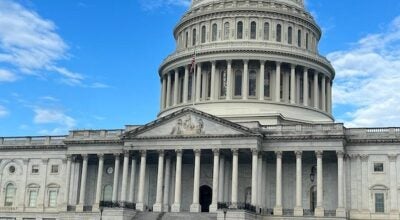Jim Beam column: How did 1957 victims recover?
Published 7:15 am Thursday, November 4, 2021

- Hurricane Audrey devastates Southwest Louisiana in 1957 and the recovery is detailed in this American Press book.
The Federal Emergency Management Agency, better known as FEMA, wasn’t in existence on June 27, 1957, when Hurricane Audrey devastated Southwest Louisiana, and an American Press reader wonders how restoration went without FEMA assistance.
“I was wondering the other day when everyone was complaining about federal aid what went on after Audrey, which was before my time, but when I believe there wasn’t nearly as much government aid,” the reader said.
Actually, it appears to have gone much better and faster than the current restoration still under way after Hurricanes Laura and Delta in August and October of 2020.
Hurricane Audrey, described as one of the deadliest in U.S. history, claimed nearly 500 lives and destroyed much of Cameron Parish.
The rapidly developing storm approached the Gulf Coast in the early morning hours of June 27. A powerful surge that had been forecast to come ashore later the next day caught Cameron residents off guard.
News reports from that time showed a number of government agencies and military units were involved in recovering bodies and rescuing stranded residents and getting them to safe shelters.
There were helicopters and military vehicles from the U.S. Army and airplanes from the U.S. Air Force and helicopters from the U.S. Navy.
The American Red Cross played a major role in setting up a shelter in an arena at McNeese State University. It also fed survivors and those who worked to rebuild homes and other structures. The Salvation Army was also involved.
Welcome Wilson, Region 5 Federal Civil Defense administrator, was in the area. He said a total of 700 workers from all concerned agencies, including volunteers, were in the Cameron area. Wilson said all agencies would meet with local residents to determine their housing needs.
Calcasieu Parish Civil Defense was also active at the time, working with the William “Bill” Shaddock Memorial Emergency Rescue Unit. The Civil Air Patrol had its aircraft helping with rescues.
Food, appliances and clothing arrived from Los Angeles, Battle Creek, Mich., Grand Prairie, Texas, and from other parts of the country.
Donald W. Stout, National Red Cross operations chief for the disaster area, said 20 percent of his organization’s time and funds were spent during the emergency phase of the operation.
“The big part now is family assistance on which 80 percent of our expenditure in time and money will be made,” Stout said.
The American Press reported on July 4 that public allocations and private contributions poured into the hurricane-ravaged area while cleanup operations in Cameron “went on at high pitch despite the Independence Day holiday.” Property damage alone was set at nearly $100 million, which would be $976 million in today’s dollars.
The newspaper said, “In the biggest major step on the financial road back for the area ripped and torn by Hurricane Audrey one week ago today, President Eisenhower allocated $1.15 million for rebuilding.” This is about $10.8 million in today’s dollars, and most of the money was to be set aside to be distributed as loans by the Federal Civil Defense Administration.
Contributions and donations were coming in from churches and other organizations all over Louisiana and from other parts of the country. The Cameron Disaster Relief fund was also growing.
The Red Cross also had an Audrey Disaster Fund. Stout said his agency was prepared to provide money for food, clothing, medical care, burials, home repair, home rebuilding, furniture and tools needed for livelihoods.
Red Cross fund grants eventually totaling $38,000 were awarded to 30 Cameron Parish families asking for assistance. The grants were approved by a local citizens advisory committee. The amounts ranged from several hundred dollars to more than $4,000.
The Red Cross reported on Aug. 18 that expenditures to aid nearly 3,700 Louisiana and Texas families, victims of Hurricane Audrey, had already reached $1.5 million. The aid was for both emergency and long-term assistance. It was estimated the disaster operation might cost the Red Cross in excess of $3 million, which would amount to approximately $28.3 million in today’s dollars.
The Red Cross estimated that 28,573 families were affected by the hurricane when it struck June 27. It destroyed 1,282 houses and damaged 22,317.
The American Press announced on July 10 that as many as 1,500 AFL-CIO labor members would rebuild homes of needy hurricane victims in devastated Cameron.
The head of the Lake Charles Building Trades Council said the effort could conceivably become the first time in history that the whole labor movement of a state moved in to help citizens suffering from the effects of a major disaster.
(More on home building as the recovery story continues Sunday).





